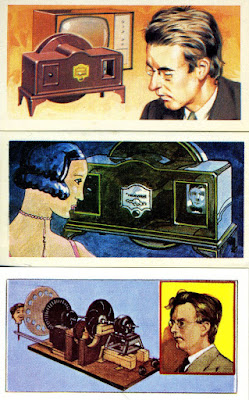Fordham University Theology professor Miachel Peppard has a bee in his bonnet -- and it's an interesting one. We have, as he points on in his recent opinion piece in the New York Times, very little representational art from the earliest era of Christianity. Among this small and precious store, the illustrated wall-panels from the ancient Syrian city of Dura (now Deir-es-Zor) loom large. Buried as a defensive fallback by occupying Roman troops around 250 A.D., the site offers a Pompeiian degree of preservation, the floors, walls, and objects of everyday life sealed up, the moment frozen in time. Among the items recovered there is a wall-panel from the baptistery of a substantial home, which includes in one corner a rough depiction of a woman at a well, identified by the Yale Art Gallery -- where it now resides -- as a depiction of the "Samaritan Woman" encountered by Jesus in the Gospel of John.
For some reason, this text was the subject of several recent sermons I've heard -- you can read the whole passage here, along with various commentaries here. Several points are key: The woman recognizes Jesus as a Jew, and he recognizes her as a Samaritan, by their clothing; Jesus compares water that the Samaritan woman is drawing with "living water," which one, having drunk, will never thirst again. Depictions of this scene are common in early Church iconography (all of it later, of course, than that in the Syrian baptistery).
Peppard thinks this might be the earliest "securely datable" image of the Virgin Mary; he points out that the Annunciation was said to have occurred when Mary had gone to fetch water from a well (a scene also shown, though less often, in early Church art).
But I'm not convinced. For one, it's in a baptistery -- surely a place where the references to "living water" would have special resonance. For two, even at this early date, I think Mary would have been shown with some sort of halo. The fact that the figure is shown alone, to my mind, doesn't shift the argument one way or the other, and as for invisible angels, I'm not convinced. In this early period, before the great conflicts over iconoclasm, it seems to me that anything and anyone important would be shown, at least in symbolic form -- in any case, there's neither Christ nor angel here. But still more convincing, to me, is that this woman is not wearing any kind of veil or head-covering, as a good Jewish woman of the era would; my understanding is that, among Samaritan women generally, such coverings were not commonly worn. She also seems to have bare feet -- it's hard to imagine an artist of this era drawing Mary in such a fashion! It's intriguing, certainly, but I don't think that this argument is compelling enough to declare this the earliest depiction of Mary -- though it may be one of the earliest of the Samaritan woman!
For some reason, this text was the subject of several recent sermons I've heard -- you can read the whole passage here, along with various commentaries here. Several points are key: The woman recognizes Jesus as a Jew, and he recognizes her as a Samaritan, by their clothing; Jesus compares water that the Samaritan woman is drawing with "living water," which one, having drunk, will never thirst again. Depictions of this scene are common in early Church iconography (all of it later, of course, than that in the Syrian baptistery).
Peppard thinks this might be the earliest "securely datable" image of the Virgin Mary; he points out that the Annunciation was said to have occurred when Mary had gone to fetch water from a well (a scene also shown, though less often, in early Church art).
But I'm not convinced. For one, it's in a baptistery -- surely a place where the references to "living water" would have special resonance. For two, even at this early date, I think Mary would have been shown with some sort of halo. The fact that the figure is shown alone, to my mind, doesn't shift the argument one way or the other, and as for invisible angels, I'm not convinced. In this early period, before the great conflicts over iconoclasm, it seems to me that anything and anyone important would be shown, at least in symbolic form -- in any case, there's neither Christ nor angel here. But still more convincing, to me, is that this woman is not wearing any kind of veil or head-covering, as a good Jewish woman of the era would; my understanding is that, among Samaritan women generally, such coverings were not commonly worn. She also seems to have bare feet -- it's hard to imagine an artist of this era drawing Mary in such a fashion! It's intriguing, certainly, but I don't think that this argument is compelling enough to declare this the earliest depiction of Mary -- though it may be one of the earliest of the Samaritan woman!

